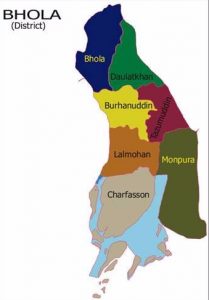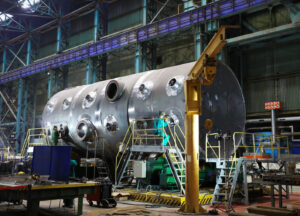M A Gofran
Biogas is an old technology. Volta invented biogas in 1776. In Bangladesh it was introduced by Dr. Karim in 1972. At present, there are about 100,000 biogas plants in the country. Biogas technology is now known in Bangladesh. In spite of many failures, the technology is now considered to be a proven, cost effective and affordable. Success rate is almost 100%. Potential is huge. According to experts, the country has a potential of about 4 million biogas plants considering available cattle dung, poultry litters, city wastes, agriculture residue, maize, food waste, water hyacinth etc in the country. Our neighboring country India has now about 5 million plants, Nepal has 300,000 plants, China has 40 million plants and Vietnam has 500,000 plants. Vietnam and Nepal are adding about 20,000 biogas plants each annually to their stock. Compare to these countries and our potential, we are far behind. In Bangladesh, the annual collective achievement by all the agencies may be around 8,000 plants, having most favorable climate for biogas production. Biogas power generation is now practiced in many countries. Germany is generating about 6,000MW electricity using biogas, of which about 2000MW by using energy crop. In Bangladesh biogas-fired power generation started in 2006 and now there are about 300 generators in use.
Since 1996, Government of Bangladesh, SNV the Netherlands, GIZ, kfw, World Bank, ADB etc have given enough financial support for the dissemination of biogas technology in Bangladesh through different agencies like Bangladesh Council of Scientific and Industrial Research (BCSIR), Local Government and Engineering Department (LGED), Infrastructure Development Company Ltd (IDCOL), Grameen Shakti, M/o Youth and Rural Development Academy (RDA). They have taken several steps to raise awareness among the common people about the technology. The farmers now know about biogas and its advantages. They are interested to be the owner of a biogas plant and enjoy its benefits. It is now necessary to identify the challenges, bottlenecks, constraints in disseminating the technology and address without any lapse of time.
There is a feeling that, economic condition of the common people in Bangladesh is far below the poverty line and deserves subsidy. Considering this, in almost all the service sectors in Bangladesh, there is provision of subsidy. Biogas having multiple benefits and being environment friendly deserves subsidy at higher rate. Every year government is giving huge subsidy to the energy sector. Use of natural gas for household use is highly subsidized. Biogas having multiple benefits deserves more subsidies. In order to attract the farmers, different stakeholders are applying different strategies. Almost all of them have provision of subsidy upto 50% of the cost of the plant. To reduce initial investment and bring the cost to affordable limit, Grameen Shakti first introduced micro-credit system in their biogas program in 2005. This could bring the technology more affordable. A customer needs to invest only 15% as down payment. The rest he can pay by installment in 2-3 years with some service charge. This system also ensures after sale service. The concerned staff is to go to the houses of the customers every month to collect installment, when they can ensure after sale service also. Thus success rate of biogas plant has gone up.
In many cases, it is seen that, the stakeholders work in a scattered way. This will make monitoring and supervision of the plants difficult. If the same number of plants would be in one area, one staff could supervise the same easily with less traveling cost. Biogas needs raw materials for gas production. Some stakeholders used to give loan to the farmers for buying cattle. This type of program should be complemented by introducing supply of improved variety of fodder, vaccination, artificial insemination, marketing of product etc to make it a success. If cattle die, the farmer will not be able to repay his installment. To overcome this, some organizations keep provision of cattle insurance.
In every house, there are night soil, kitchen waste, jungles and agriculture waste etc. If we can ensure use of these waste products, it will supplement and complement the need of raw materials to some extent. This needs simple motivation only. Maize may be one of the important sources of raw for biogas production. In Bangladesh, maize is cultivated in about 300,000 hectares of land. After harvesting maize, the plant which is about 80% of the total can be used as raw materials in a bio-digester.
Biogas technology benefits us in many ways. All hazardous waste, that spread bad smell, create diseases are the raw materials of a bio-digester. It is produced through an anaerobic process; as a result all harmful pathogens die. So, by promoting biogas technology, we are reducing diseases and thus reducing our dependency on doctors, medicine, hospital, medical college etc. Our expenses against health are one of the reason of our poverty. Extensive use of biogas plant can ensure a healthy and wealthy environment. and also reduce our medicine cost to some extent.
The most important issue is that, in Bangladesh, there is no coordination in the dissemination of biogas technology. Different stakeholders work in different ways. Some are giving 60% subsidy, some are giving 40% subsidy and some are giving 100% subsidy. Some are giving credit support and some are not. We are happy to know that, government declared national renewable energy policy and established an authority named Sustainable and Renewable Energy Development Authority (SREDA) to implement the policy. We believe the authority will ensure coordination among the stakeholders.
It is nice to see that, for the development of renewable energy sector in Bangladesh, there is sector policy and for the implementation of sector policy, there is an agency named SREDA. We hope and believe that they will ensure coordination among the actors in the sector. We also hope, SREDA will declare their sector plan. At this moment, renewable energy sector needs two more support from the government i.e sector budget and legislative support. Government already declared their target of achieving 10% energy share from renewable, the sector deserves allocation of 10% share from national budget for energy.
Legislative support is the most important part for smooth functioning of renewable energy sector. We have renewable energy policy. Now, we need renewable energy act. Germany is the first country to pass renewable energy act in 2002. They convened the 1st International Renewable Conference in 2004 in Bonn, where Renewable Energy Network (REN 21) formed. It is now working as the umbrella organization of the renewable energy world. Following Bonn conference, Beijing International Renewable Energy Conference (BIREC) held in 2005, Washington International Renewable Energy Conference (WIREC) held in 2008, Delhi International Renewable Energy Conference (DIREC) held in 2010, Abu Dhabi International Renewable Energy Conference (AIREC) held in 2012, South Africa International Renewable Energy Conference(SIREC) held in 2015. As a result of these efforts by international community, now more than 150 countries have renewable energy policy. They made necessary administrative reforms to implement policy. Many countries now passed renewable energy act. China passed their renewable energy act in 2005; USA passed their renewable energy act in 2008. As a result renewable energy is now progressing at an accelerated rate. Globally, a transition is going on from conventional to renewable. Some countries already achieved half of their total energy need from renewable. We hope, SREDA will take initiative to develop national renewable energy act.
(M A Gofran is Chairman, BBDF)



